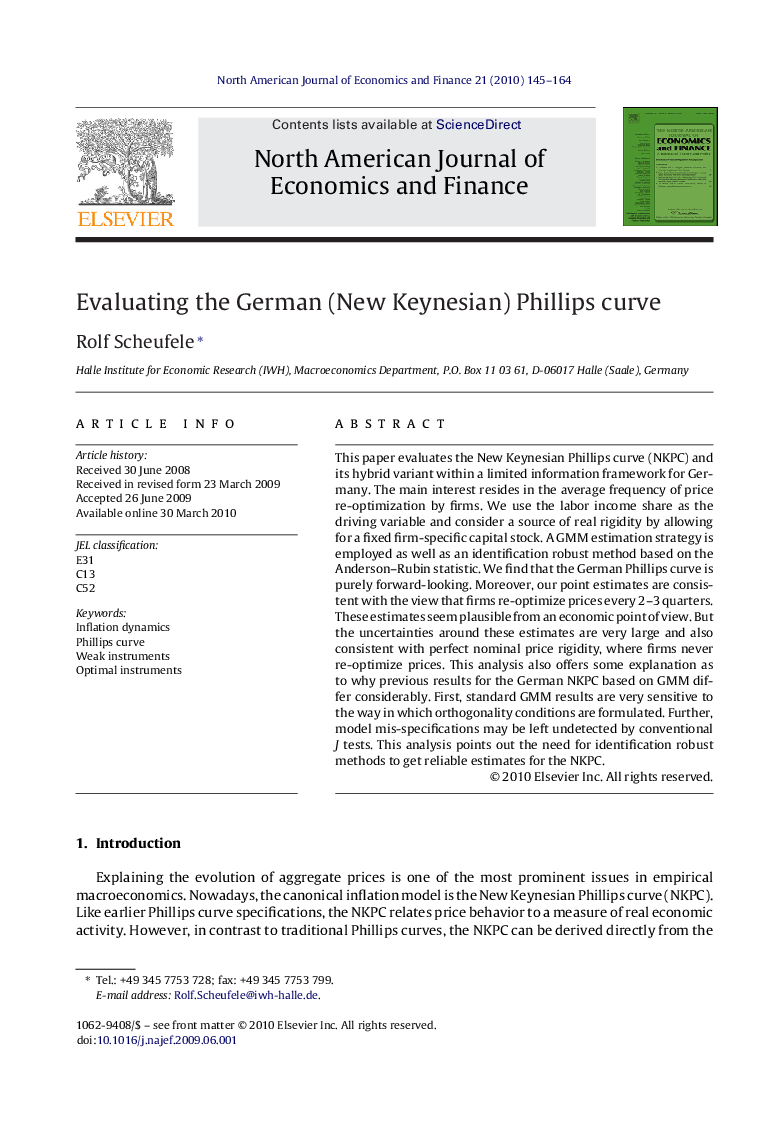| کد مقاله | کد نشریه | سال انتشار | مقاله انگلیسی | نسخه تمام متن |
|---|---|---|---|---|
| 975420 | 1479798 | 2010 | 20 صفحه PDF | دانلود رایگان |

This paper evaluates the New Keynesian Phillips curve (NKPC) and its hybrid variant within a limited information framework for Germany. The main interest resides in the average frequency of price re-optimization by firms. We use the labor income share as the driving variable and consider a source of real rigidity by allowing for a fixed firm-specific capital stock. A GMM estimation strategy is employed as well as an identification robust method based on the Anderson–Rubin statistic. We find that the German Phillips curve is purely forward-looking. Moreover, our point estimates are consistent with the view that firms re-optimize prices every 2–3 quarters. These estimates seem plausible from an economic point of view. But the uncertainties around these estimates are very large and also consistent with perfect nominal price rigidity, where firms never re-optimize prices. This analysis also offers some explanation as to why previous results for the German NKPC based on GMM differ considerably. First, standard GMM results are very sensitive to the way in which orthogonality conditions are formulated. Further, model mis-specifications may be left undetected by conventional J tests. This analysis points out the need for identification robust methods to get reliable estimates for the NKPC.
Journal: The North American Journal of Economics and Finance - Volume 21, Issue 2, August 2010, Pages 145–164